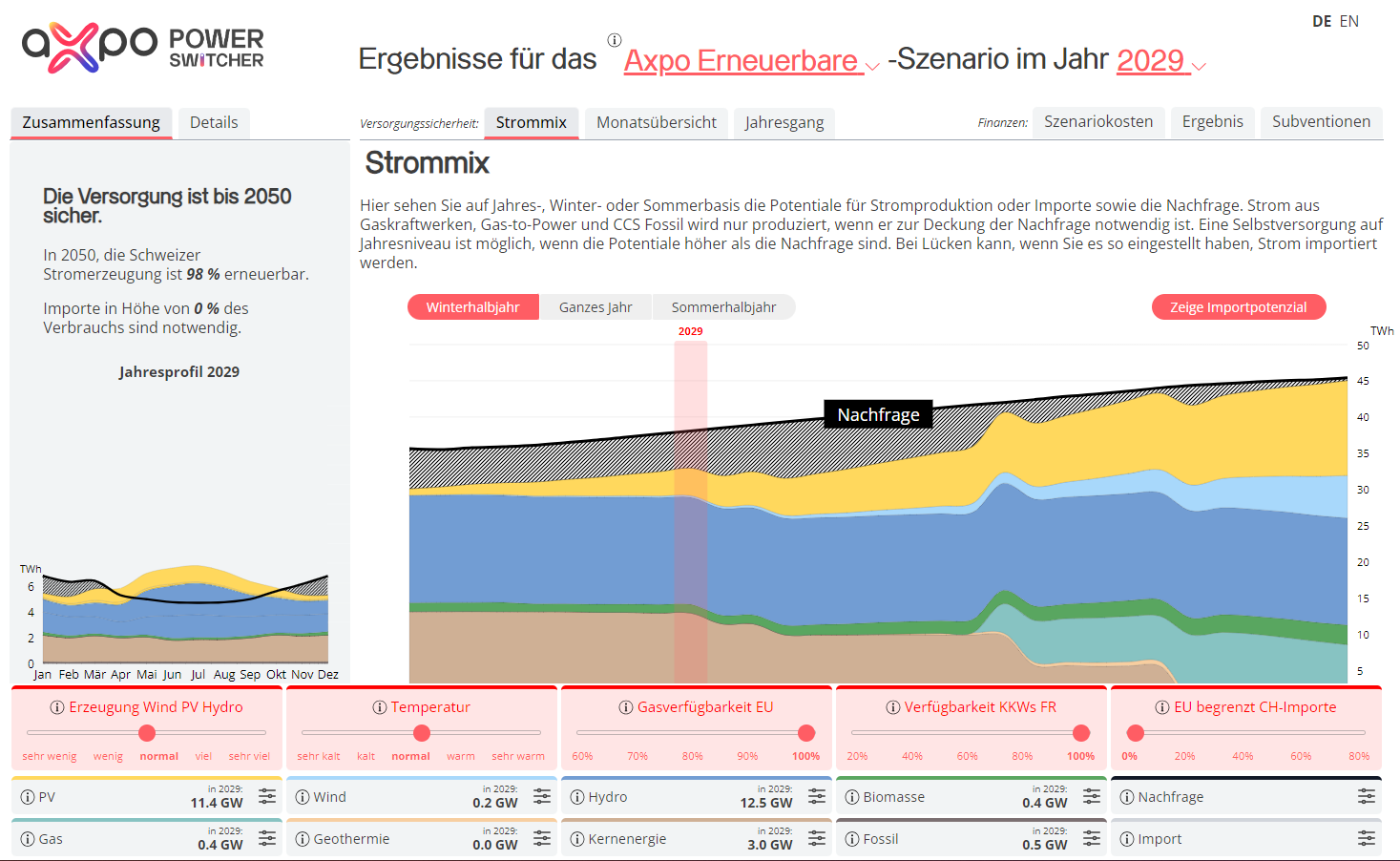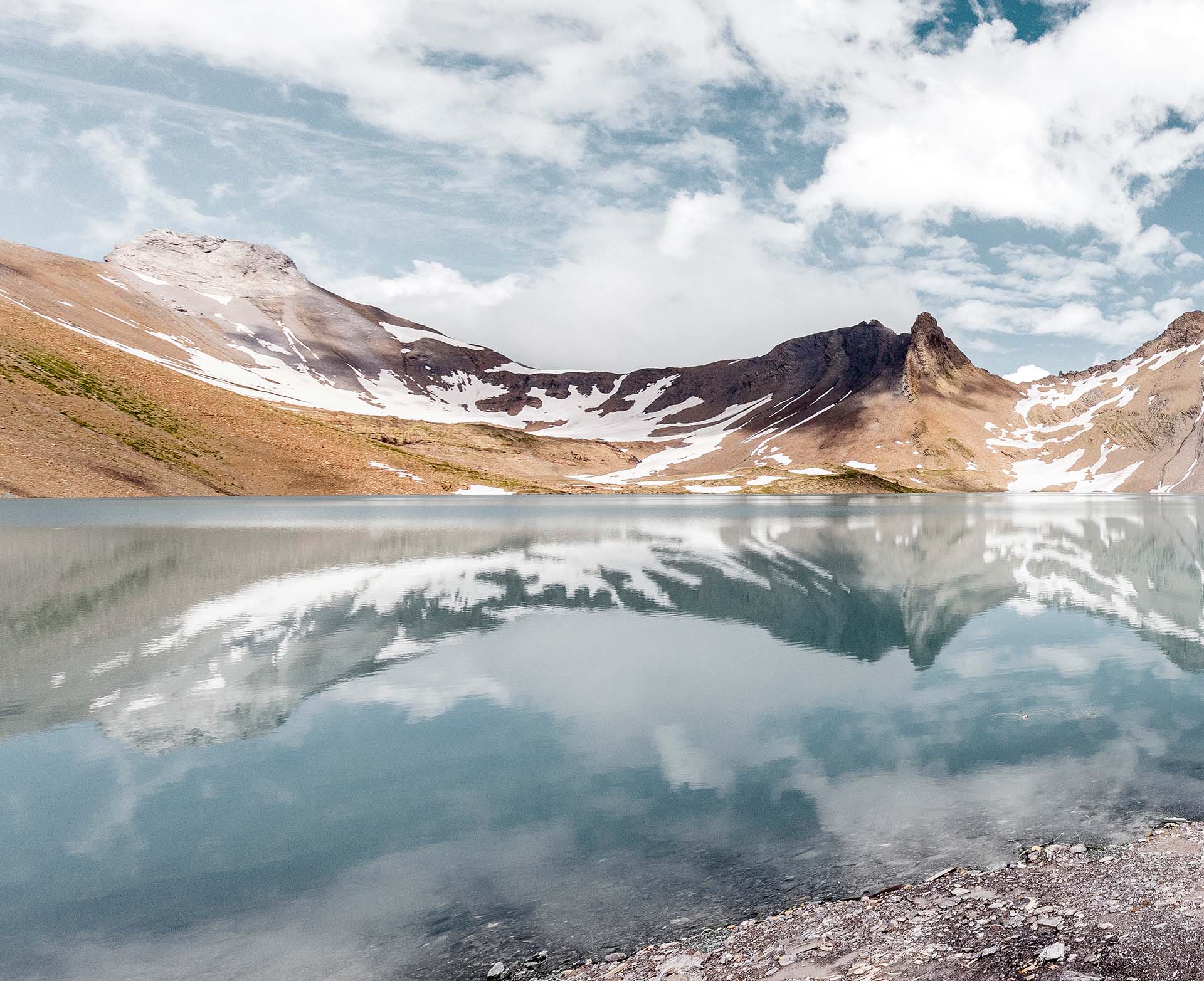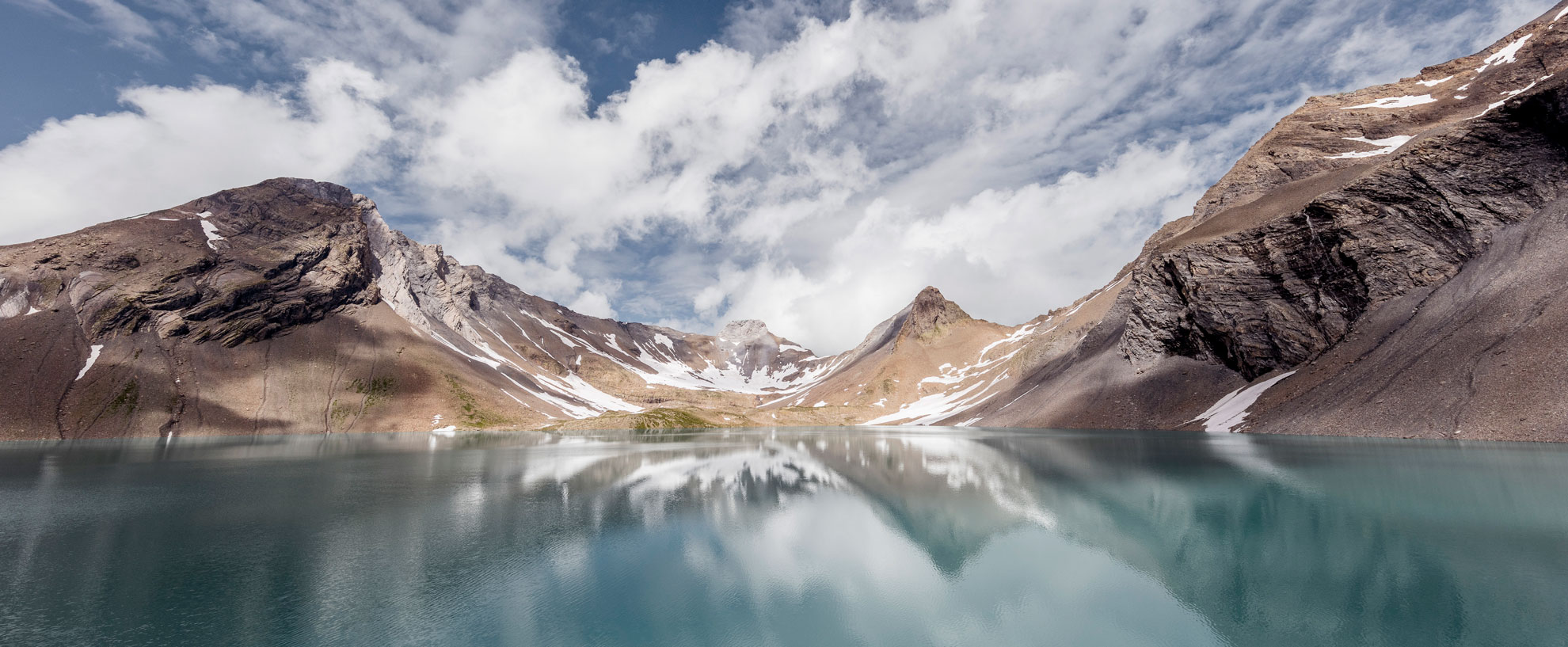

Limmern pumped storage power plant Battery in the mountains
When a generator is driven by a turbine, it generates electricity. When the generator is supplied with electricity instead, it works as a motor and can drive a pump. This principle is used in pumped storage plants. They are used to store electrical energy. In the storage process, water is pumped from a reservoir up to a lake located at an higher altitude. This water can then be released at a later time to drive turbines.
Pumped storage power plants can store electricity at times when electrical energy is abundantly available. When demand peaks are high, they can supply electricity by turbining the pumped up water. For this reason, a pumped storage plant is also referred to as a peak energy plant. In view of the limited efficiency, only part of the energy absorbed is recovered. The profitability of a pumped storage power plant results primarily from power market price variabilities at different points in time.
Our plant
The Limmern pumped storage plant (LPSP) is one of Axpo's most important expansion projects in recent years with investments amounting to CHF 2.1 billion. The ground-breaking ceremony took place in 2009, followed by a construction and planning period of about ten years. With an output of 1000 MW, the LPSP is a huge battery in the Glarus Alps. In contrast to pure storage power plants, pumped storage plants such as LPSP cannot only generate peak energy. They can also convert excess electricity generated during off-peak periods into valuable peak energy (see also: How it works).
The new LPSP, built underground in the rock, can pump water back from the Limmern lake to the Muttsee reservoir located 630 metres higher up, and then reuse it for electricity production when necessary.
With a length of 1054 metres, the Muttsee dam is the longest in Switzerland and lies at around 2500 metres above sea level. It is therefore also the highest dam in Europe. The 250,000 m3 of concrete - that's how much was needed to build the record-breaking dam - is offset by the huge water volume of 23 million m3 that the gravity dam on Muttenalp can hold.
Limmern pumped storage plant from A-Z
The most important facts about LPSP at a glance:
LPSP in short
The LPSP was successively commissioned in 2016/17. The planning and construction period took a total of ten years. Actual construction took around seven years.
Construction of the LPSP was a logistical masterpiece. A total of well over 3000 workers were employed by numerous engineering, construction, supply and specialist companies in the high mountains, in underground mining or in the valley area in Tierfehd. Around 6000 different plans were drawn for the machine and transformer caverns and the quality assurance protocols for the steel hydraulic engineering alone fill 870 binders.
The LPSP was equipped with four reversible pump turbines, each with a turbine and pump capacity of 250 MW. The output of the LPSP is 1000 MW. This increased the output of the Linth-Limmern power plants from around 520 MW to 1520 MW. In terms of capacity, this is equivalent to the Leibstadt nuclear power plant or the Cleuson Dixence hydroelectric power plant.
By the way - for specialists and those who want to become specialists: The four pump turbines rotate at 470 to 530 revolutions per minute. The nominal flow rate in turbine operation is 47m3/s per machine, in pump operation 40m3/s per machine.
The LPSP also uses four generators to generate electricity. The rotors alone weigh 330 tons each. They could therefore not be transported from the factory to the mountain, but were assembled by the manufacturer Alstom on site in the machine cavern.
The Muttsee holds records. With a water level of exactly 2474 m above sea level it is the highest reservoir in Europe. The dam wall is 1054 metres long, making it the longest dam in Switzerland. The construction required 250,000 cubic meters of concrete, which was produced directly on site. The water volume of the Muttsee dam is 23 million cubic metres.
Around 2200 single-family homes could be built with the concrete used, and the water volume of 23 million m3 that the Muttsee can hold corresponds to that of 9200 Olympic swimming pools. The transport railways (funicular railway, construction cableways 1 and 2) transported 3.5 million tonnes of material and 1.4 million passengers up and down the mountain.
The Muttsee dam is a gravity dam. It has a crest length of 1054 metres and is between 4 and 6 metres wide at the crest. It measures 27 metres at the foundation. Concrete volume: 250 000 m3, max. capacity bottom outlet 22.5 m3/s, storage volume 23 million cubic metres.
The Limmernsee dam is an arch dam with a height of 146 metres. It is 370 metres long and 9 metres wide in the area of the crest. The width of the foundation is 25 metres. The Limmernsee has a storage volume of 92 million cubic metres.
The LPSP cavern centre was built entirely inside the mountain and is located about 600 metres from the foot of the Limmernsee dam at about 1700 metres above sea level. The control centre is connected to the Muttsee lake by two pressure pipes and to the Limmern lake with two 500-metre long underwater tunnels. The cavern is accessed from the valley, i.e. from Tierfehd, through a four-kilometre-long access tunnel. A funicular railway runs inside the tunnel.
The machine cavern is 149.9 metres long, 30.6 metres wide and 53 metres high. The adjacent transformer cavern is somewhat smaller - 131.3 m long, 21.5 m wide and 24.3 m high. It comprises four machine transformers, each with 280 MVA (megavolt ampere).
The construction of the LPSP increased the output of the Linth-Limmern (KLL) power plants from around 520 MW to 1520 MW. This massive increase in output made it necessary to connect all KLL plants to the Swiss extra-high voltage grid. For this purpose, the existing 220-kilovolt overhead line from Tierfehd to Grynau near Uznach was supplemented with a new, parallel 380-kV line from Tierfehd to Schwanden/Sool. There, the line was connected to the existing 380 kV "Vorab" line.
When constructing such plants, the environment is always taken into account in terms of sustainable activity. The environmental measures associated with the concession were defined and implemented in close cooperation with the authorities and nature conservation organisations as part of an environmental impact assessment and protection and use planning. After completion of the project, many of the necessary installations such as the container village or the transport cableways were dismantled and the areas used for construction were renaturalised.
In addition to the Limmern pumped storage plant, the Tierfehd and Linthal power plants are also part of Kraftwerke Linth-Limmern AG (KKL).
- The Tierfehd power plant consists of two stages. One stage processes the water from Limmernsee, the other the water from Hintersand. The Limmern power plant stage has an output of 306 MW, the Hintersand power plant stage one of 46 MW. After electricity has been produced, the water flows into the Tierfehd compensation basin. The water from the Hintersand compensation reservoir can also be relocated to Limmernsee when electricity demand is low.
- The Tierfehd pumped storage plant, which commenced operation in 2009, uses the existing Limmern pressure system. The machine group has a maximum capacity of 138/131 MW in turbine/pump operation.
- The Linthal power plant uses the gradient between Tierfehd and Linthal. It has an output of 34 MW. After the power plant, the water flows into the Linthal compensating basin and from there back into the Linth River.
"Jahrhundertwerk im Glarner Kalk"
Rudolf Hug, former member of the Axpo Board of Directors and passionate photographer, published his latest book "Jahrhundertwerk im Glarner Kalk" in 2019. It describes the genesis and operation of the Limmern pumped storage power plant. Impressive pictures over 156 pages underline the importance of this pioneer project.
Order here ISBN: 978-3-9524084-7-6
Videos of the pumped storage plant
Follow the construction of the Limmern pumped storage power plant in fast-forward mode.

Factsheet and photos of the Limmern pumped storage plant
- Factsheet LPSP (German only) View Send email Download
- Photo LPSP 1 Send email Download
- Photo LPSP 2 Send email Download
- Photo LPSP 3 Send email Download
- Photo LPSP 4 Send email Download
- Photo LPSP 5 Send email Download
- Photo LPSP 6 Send email Download
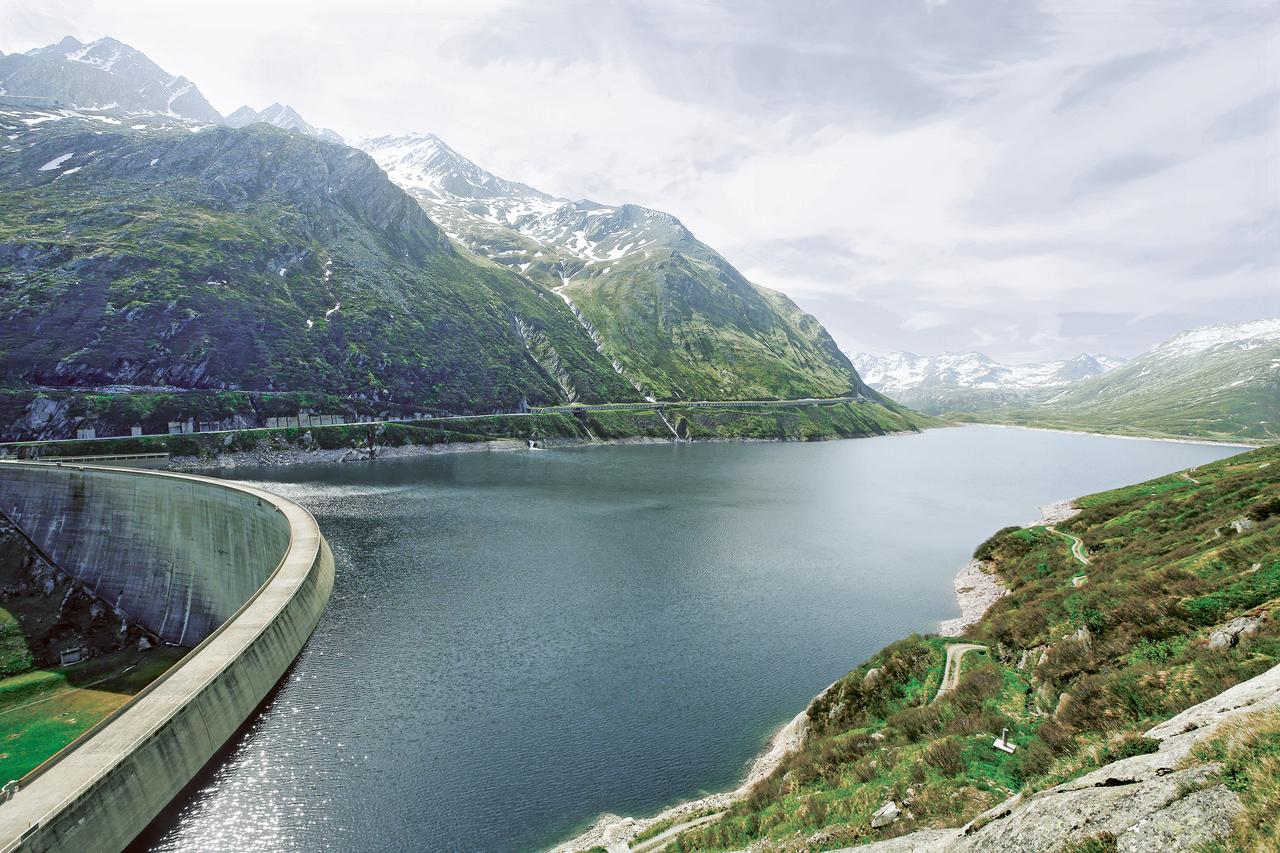


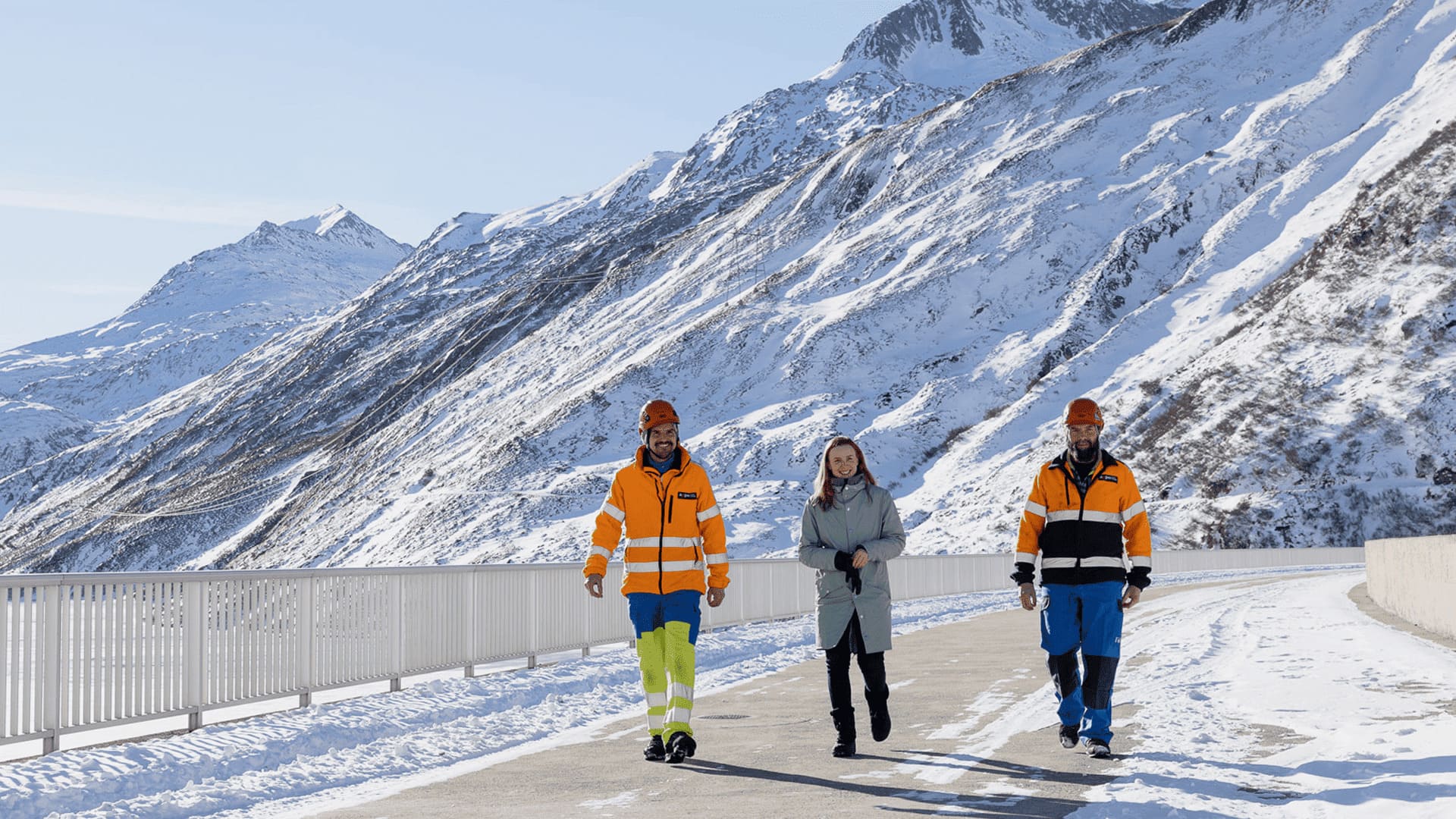
.jpg)

